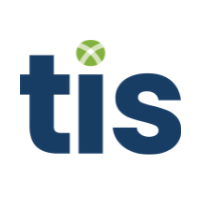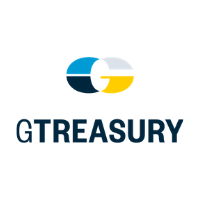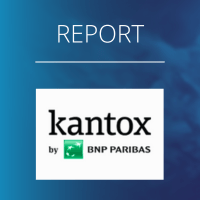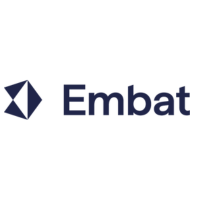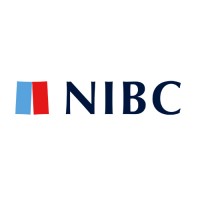The following questions are important for treasurers to address, as they play a critical role in ensuring optimal decision-making and risk mitigation in Treasury Tech. We’ve delved into these inquiries with insights from experts in the field, including treasuryXL and Treasury Tech expert Philip Costa Hibberd, and our esteemed partners:
Treasury Consultant / Owner Automation Boutique
Philip is a treasuryXL expert, seasoned treasury consultant and owner of Automation Boutique. He shares his profound understanding and provide comprehensive responses to each of these inquiries. Furthermore, you will find valuable perspectives and recommendations from our affiliated partners, detailing the ways in which they can offer their assistance.
1. How can AI and Machine Learning improve my cashflow forecasting process?
Philip Costa Hibberd answers…
I think that at its core cashflow forecasting is a “people problem”, not a “technology problem”. How can you get everyone in the organization aligned so that you have access to correct data from multiple processes (AP, AR, budgeting, funding, risk management, etc.) and multiple sources (ERPs, TMS, Excel files, information in people’s brains)? Once you tackle the core problem, then AI and Machine Learning can help you make sense of that data and give you insights and nudges. For example, it can help you adjust your forecast based on cyclicality patterns or client behaviours which would be hard to detect and quantify otherwise (for example a client who has a habit of paying 60 days late during the year-end months…).
Note: Partner advice is presented in a random order
Philipp Costa Hibberd rightly pointed out that cash forecasting often boils down to a people problem. However, this so-called “people problem” can be effectively tackled with a technological solution. On one hand, this involves automating data input from diverse sources such as ERPs, TMS, etc., and banks…
Read full advice
On the other hand, the technology solution must offer the right tools and functions to work efficiently with the gathered data. This means facilitating collaboration, establishing clear workflows, and incorporating drill-down functions for full insights. Forecasting capabilities across various time horizons or scenarios, accompanied by supportive visual analytics and pivot tables allow to access information at a glance and also facilitate reporting to stakeholders outside of treasury. With this technology setup, you fix the core problem. Given robust data, AI or analytics supported insights can then help to further enhance forecast accuracy from, let’s say, maybe 80 to 85%. This is the fine-tuning. The cherry on top. Some of our cash forecasting customers even use the insights they gain on their customer’s payment behavior as a health check indicator: Did the payment behavior of our major customers lately change? And if so, what could be the reason behind it? Do we need to take action? But the foundation is key. AI, ML, or rule-based analytics can’t provide useful insights without a robust and comprehensive data base.
We like to separate the role of AI and machine learning in cash flow forecasting. Through our predictive analytics functionality, that is based on machine learning, we can help treasurers build a better foundation for their long-term forecasts. For example,…
Read full advice
predictive analytics allow you to include external data patterns, such as macroeconomics or industry indices in forecasts. In addition, it can analyze historical data and include it in your forecast to increase the reliability of long-term forecasting. Combining predictive analytics data with short-term forecasting variables provides an excellent foundation for treasurers. We see that AI, on the other hand, is more utilized for creating reports and to analyze data. It’s able to do so efficiently and can easily pinpoint data that don’t seem correct.
AI is changing our ability to process and gain insight into large data sets that affect cash flow forecasts. However, human logic is still critical. If you take something like data from 2020 to 2022, you still have to apply human logic and understand that those datasets may be inherently outliers due to COVID.
Read full advice
AI can completely redefine how treasury teams manage cash forecasting, in partnership with technologies like APIs and Analytics. Already we see AI being used to generate forecast cash flows from historical bank transactions and/or from ERP data, as well as using AI to benchmark the AI forecasts against other forecast methods.
Author Bob Stark
Read full advice
This not only allows us to harness and learn from historical data sets, but it also solves the question most treasury teams ask themselves: is AI more accurate than what I was doing already? The answer is: let’s let AI figure that out too.
Another scenario we also see emerging is where AI can be used to look at less structured historical treasury transactions – such as bank or ERP data – and make predictions about cash flows from a new acquisition or when entering a new market. In this scenario, treasury has no historical basis to learn from, but we can triangulate observations by incorporating data from other parts of the business and based on new assumptions we feed the models to learn from.
The past 12 months have taught us that what is possible with AI is beyond what we previously imagined. It is an exciting opportunity for treasurers.
2. How can we make different systems communicate with each other?
Philip Costa Hibberd answers…
A surprisingly common approach is to hire more people to elaborate information and copy-paste it from one system to another. That tends to get expensive and messy very quickly (and people tend to get bored and leave).
A better approach is to try and link the systems directly, without humans in the loop. This is easier to do if the systems have APIs (Application Programming Interfaces) available. If they don’t have APIs, then you can either look into building bespoke back-end interfaces, or you can look into other technologies such as RPA (Robotic Process Automation). RPA can easily replicate the steps the humans do on the front end and also connect directly to the APIs when available, making it a quick and cost-effective way to connect different systems.
Note: Partner advice is presented in a random order
Minimizing human involvement in system communication is undeniably beneficial—it not only reduces the potential for errors but also mitigates risks. Additionally, if people are not busy with monotonous copy-paste jobs, they can dedicate their time to focus on more strategic tasks…
Read full advice
Whether it’s optimizing liquidity management, refining borrowing strategies, or addressing other critical areas. APIs certainly play a pivotal role in today’s system connectivity, allowing for real-time data exchange, maintaining constant communication between systems, and offering treasurers great flexibility when pursuing a best-of-breed-approach in their system landscape. But the selected method of system communication should be driven by the respective use case. Building customized back-end interfaces in case a certain legacy system cannot connect via APIs, potentially can turn into substantial, neither cost- nor time-efficient IT undertaking. Our advice is opting for a SaaS solution provider that offers a broad spectrum of connectivity options and is multi-protocol enabled. For the use case of Cash Forecasting, this includes APIs, of course, but also file transfers, and even manual uploads of Excel sheets, acknowledging that the human factor often cannot be entirely eliminated. Flexibility in connectivity capabilities is paramount. If determines if the onboarding of new entities is a complex programming project, or rather a straightforward configuration task.
It’s evident that APIs are an important topic in system communication. Many banks as well as solution providers are developing APIs for different systems and banks to communicate with each other. Most systems can already communicate via APIs…
Read full advice
They are helpful and can enable real-time cash management, for example. When such communication methods are available, they’re always an interesting option. However, we still experience a big need for file-based connections in many cases, especially with banks.
This is one of the biggest challenges that treasurers face in relation to productivity, efficiency, and accuracy. In essence, they are looking for one source of truth. Treasury management systems help address this problem…
Read full advice
However, it’s important to keep in mind that if a TMS provider states they have an API for a system or institution you work with, that does not necessarily mean that the API offers comprehensive data coverage. A single source of truth via a TMS requires multiple data connection mediums from each provider to make a comprehensive data connection.
The popular answer is APIs – and we believe in building and supporting APIs for bank connectivity, ERPs, internal platforms, reporting packages and embedded applications within payments and other finance workflows.
Author Bob Stark
Read full advice
APIs introduce a new way of unifying and sharing data between systems internally and externally as they not only offer the immediate, “real-time” ability but they also address treasury teams’ concerns around change management. Do I have the latest data from the ERP or from the bank? With APIs, the answer will be yes, especially as more banks and other technology providers similarly deploy APIs.
Of course, not every system has fully opened their platforms to APIs which makes it critical to have multiple paths to connect systems together, so treasury always has the information they need to make fully informed decisions.
3. Which tasks in our treasury processes can be automated with RPA?
Philip Costa Hibberd answers…
In principle any task which is rule-based and standardized enough can be automated with RPA. Ideally, these tasks should also be time-consuming, repetitive, and/or prone to human error to be good first candidates for automation. Complex tasks that require an understanding of context, interpretation, a lot of exception handling, and a good dose of discretionary judgment are best left to the treasury professionals’ expertise.
These are some areas where we often see RPA helping treasury professionals effectively:
- Master Data management and data migration
- Reporting
- Controlling and month-end activities
- Monitoring of covenants
- Cash positions and cash flow forecasts
- Payment and bank statement processes
- Supply chain finance processes
- Trade finance processes
Note: Partner advice is presented in a random order
RPA can be a good solution in cases where processes are standardized, monotonous, and resource consuming, and where stakeholders are not willing to invest into a holistic rethink or rebuild of said process. Meaning, they just want to take the human element out, but everything else can remain the same…
Read full advice
Reporting or data cleaning are examples for this. We have seen clients use simple “bots” to download and transform data for further use cases. However, more often than not the use of RPA points to underlying inefficiencies in systems and processes. We would often encourage treasurers to try to improve these processes, rather than “codify” them through RPA. In the long run, it is way more efficient to optimize the whole process end-to-end instead of optimizing selectively on the micro level (isolated task). To give you an example, instead of automating an isolated payment tasks in a local e-banking tool (e.g. file uploads), the future-proof solution is to streamline the whole process by leveraging a payment platform with both ERP and bank integration.
Everything that is simple and straightforward can and should be automated. There’s a use case for automation in almost every area of treasury, and a TMS usually has this set up automatically or can customize the automation of certain processes with the help of workflows. For example,…
Read full advice
manual tasks, such as automatically fetching statements, sending statements to banks, and sending out reports, are often automated. Typically, a well-functioning TMS will automatically cover such processes because it’s part of scheduled tasks and functionalities of the system.
While RPA has a lot of promise in relation to general process automation, they are typically highly bespoke tools for niche applications, as opposed to broad-based SaaS platform scale.
Read full advice
I agree that joining multiple tasks, especially across systems that otherwise require manual effort to connect, can be supported by RPA.
Author Bob Stark
Read full advice
Yet, with the emergence of ChatGPT and Generative AI, we also see the looming obsolescence of RPA given that this new category of AI solutions can do everything RPA can and still offer greater learning and predictive ability. RPA as rules-based automation was a great start, but AI clearly offers more and is where finance teams are investing their attention.
Conclusion
Addressing the core challenges of cashflow forecasting as a “people problem” and achieving organizational alignment is crucial before leveraging AI and Machine Learning for deeper insights. The integration of systems can be efficiently achieved through APIs, and when unavailable, technologies like RPA offer cost-effective solutions. Automation, achieved with a “best-of-breed solution” or with a flexible tool with RPA, proves beneficial across various treasury tasks, focusing first on rule-based, standardized processes. The collaboration of human expertise and automated tools optimizes efficiency, offering treasurers the ability to make informed decisions and enhance overall treasury processes.
If you need extra information or help, please get in touch with our partners. They are here to help you make the best possible Treasury Tech decisions for your company.



